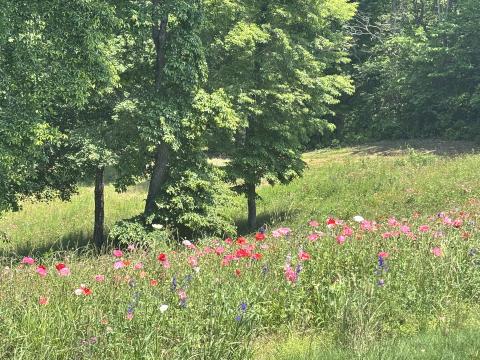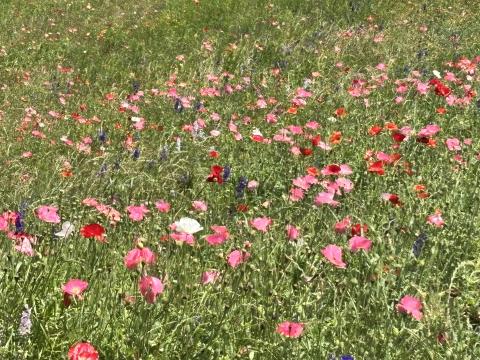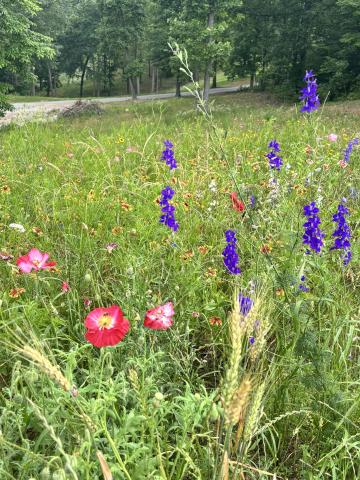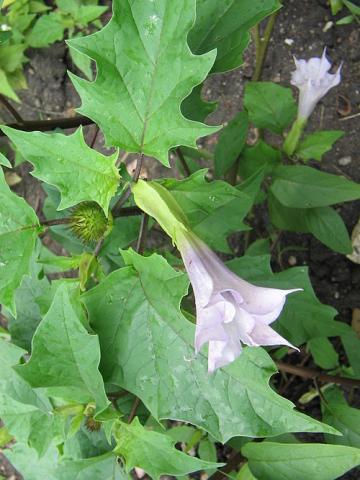Pollinator Garden
The focus has recently been on declining bee populations worldwide. Some plants are self-pollinating, while others may be fertilized by pollen carried by wind or rain. Other blossoms are pollinated by insects and animals, which may include bees, wasps, moths, butterflies, birds, flies, and small mammals, including bats. Bees are considered the most important pollinators. Many fruits, nuts, and vegetables we consume rely on pollinators to reproduce and produce fruit. Pollinators help transfer pollen from one flower to another, which is necessary for fertilization and fruit development.
Daniel Raichel, Director of Pollinators & Pesticides at the Natural Resources Defense Council (NRDC), states that bees are in crisis, and honeybees keep telling us so. “With colonies weaker than ever, our food system could be just one new disease or parasite away from a sudden-onset catastrophe.” There are multiple factors contributing to this, including climate change, pesticide use, loss of habitat, as well as parasites and diseases in hives. Because bees are essential pollinators for many crops, including our food crops, this is a serious threat.
So, my husband and I felt we needed to do our part to help the pollinators. The approach to our house is a rather steep hill, not good for much of anything except for frequent bushhogging. Downhill is fairly easy. Uphill is a slog. What if we were to make that into a pollinator-friendly area? Brilliant, huh? Except that this acre was overrun with weeds (as well as native wildflowers) of all sorts. There was a wide variety of noxious and/or invasive plants, including the well-known kudzu, along with ragweed, horseweed, Indian tobacco, poison ivy, Virginia creeper, a selection of plants from the nightshade family, tree of heaven, Paulownia, devil's walking stick, and a bunch of unfamiliar plants. My all-time favorite was a beautiful, large-leafed plant with gorgeous purple bell flowers hanging down. Until my SEEK app informed me that it was the very poisonous jimson weed.
In order for a garden to be considered a pollinator garden, it should provide various nectar-producing flowers, shelter or shelter-providing plants for pollinators, and avoid the use of pesticides.
Pollinators aid in the production of one out of every three bites of food consumed by humans, and pollinator gardens are a way to offer support for these species.
The plan was to kill all the weeds and prepare the hillside (as much as we could) for wildflower seeds. We sprayed herbicide and soil tested and fertilized and sprayed and soil tested and fertilized. We did that for 2 years. (Yes, we killed pollinators with the herbicide while planning to help pollinators. I get the irony here.) We also killed some absolutely wonderful local wildflowers. Then we seeded 10 pounds of very expensive wildflower seed (with 39 varieties of wildflowers) over the acre using handheld bag seeders. This required walking up and down the steep hill while turning the crank to spread the seed. (We may have overseeded some.) We then rented a straw mulcher to blow straw over the new seed.
Early this spring, a poppy or two could be seen in the field. But with all the rain and sun we have had lately, there is now a profusion of wildflowers blooming, the majority of which lean towards being poppies. The next step is to introduce bees.
Mason bees are super spring pollinators. They’re gentle, easy to raise, fun to watch, and highly efficient. Summer Leaf bees (also known as Leaf Cutter bees) are perfect for mid-late season wildflowers, fruits, and garden vegetables. Mason bees and Summer Leaf bees pollinate around 95% of the flowers they visit. Honeybees only generate around 5%. Unlike honeybees, Mason and Leaf Cutter bees don’t live in colonies but, instead, each female builds her own nest to raise her young. Because there is no queen or hive to protect, these bees are calmer and rarely sting. We were not ready to introduce Mason bees this past spring, but are now awaiting a (small) shipment of Leaf Cutter bees to pollinate our wildflowers and propagate their species. We are new at this bee and wildflower thing. Wish us luck!

WILDFLOWERS SEEDED 10/12/24:Allyssum, Annual phlox, Aster,Baby’s breath, Bird’s Eye,Black eye Susan, Catchfly, Chinese Forget-me-not, Columbine, Coreopsis, Corn poppy, Cornflower, Cosmos, Dame’s rocket, Evening primrose, Four O’clock marvel, Foxglove, Gayfeather, Indian blanket, Lance leaf coreopsis, Lemon mint, Lupin, Maltese Cross, Marigold, Milkweed, Nasturtium, Nicotiana alata, Penstemon, Poppy, Sage, Scarlet phlox, Scarlett Sage, Shasta daisy, Siberian wallflower, Snapdragon, Sweet alyssum, Toadflax, Tree mallow, Zinnia
- Log in to post comments


